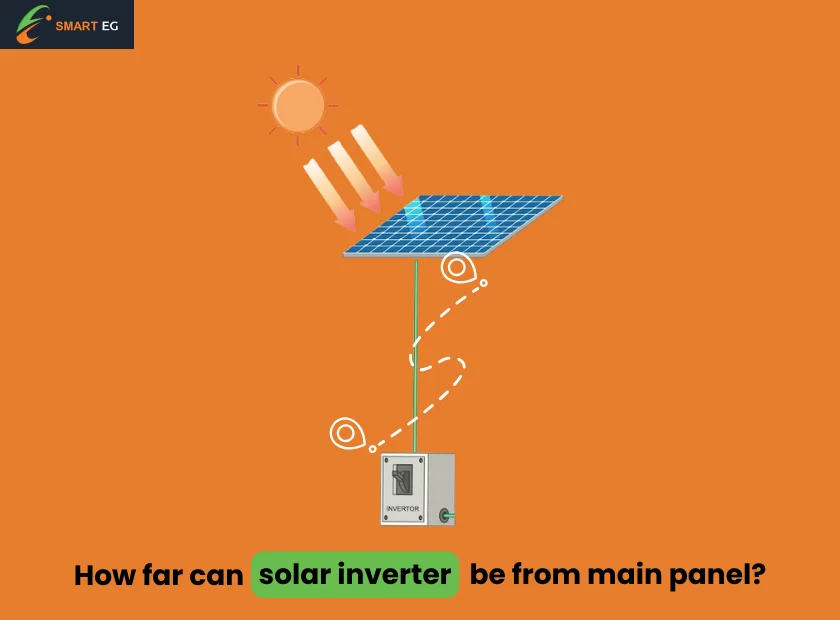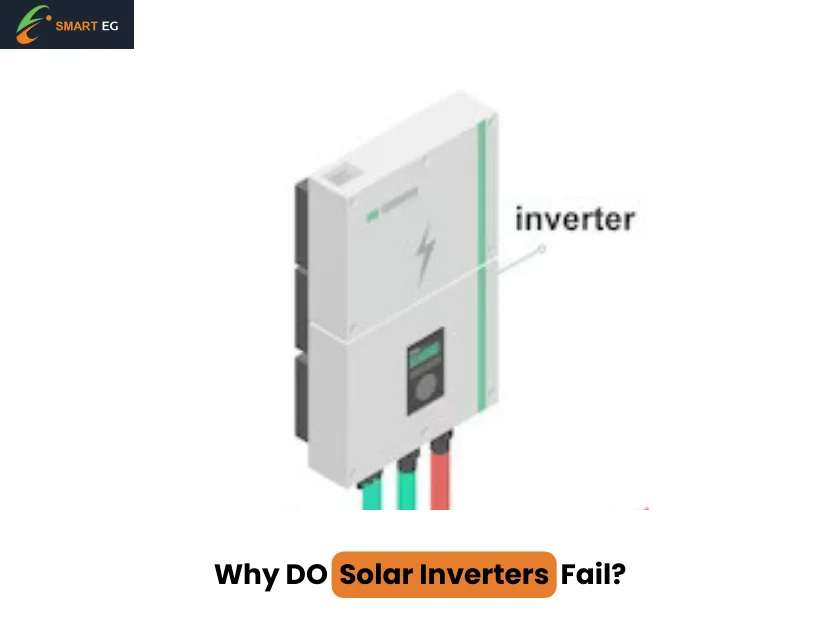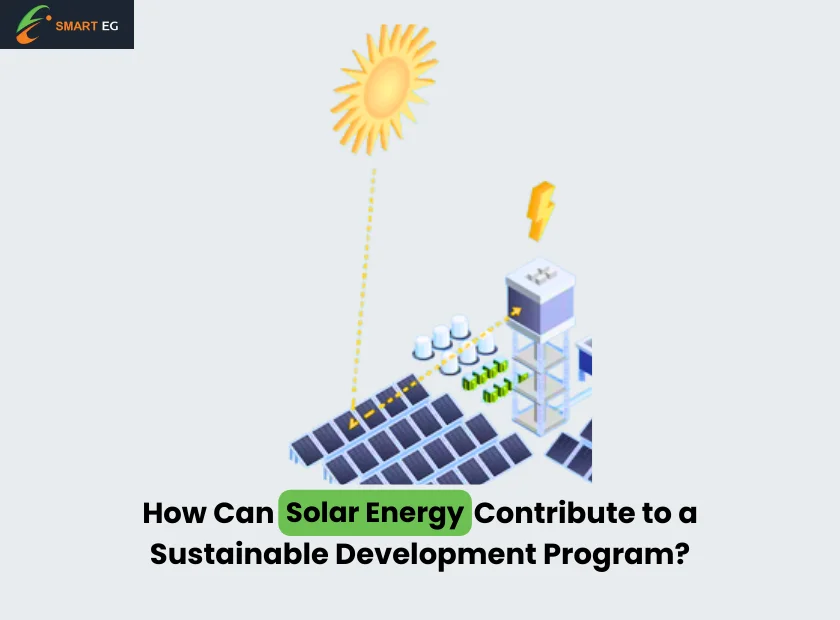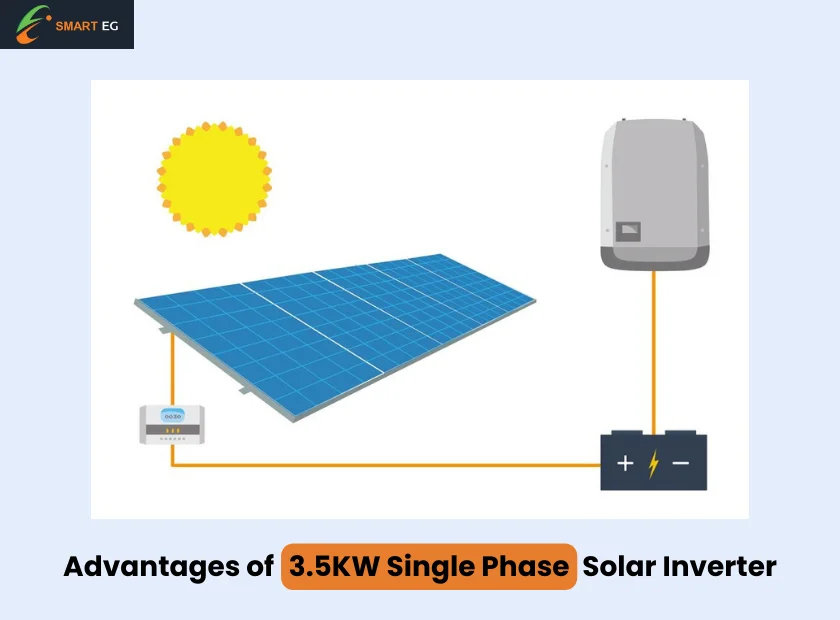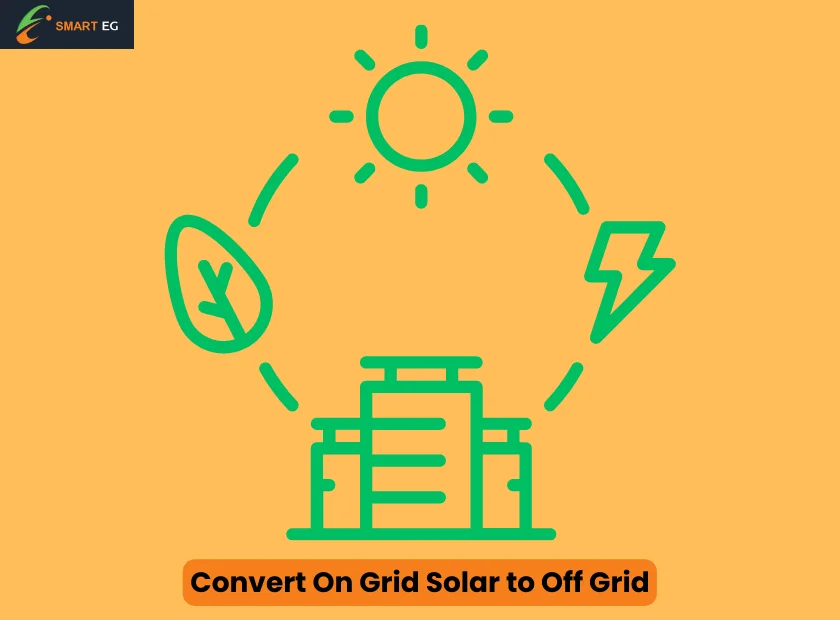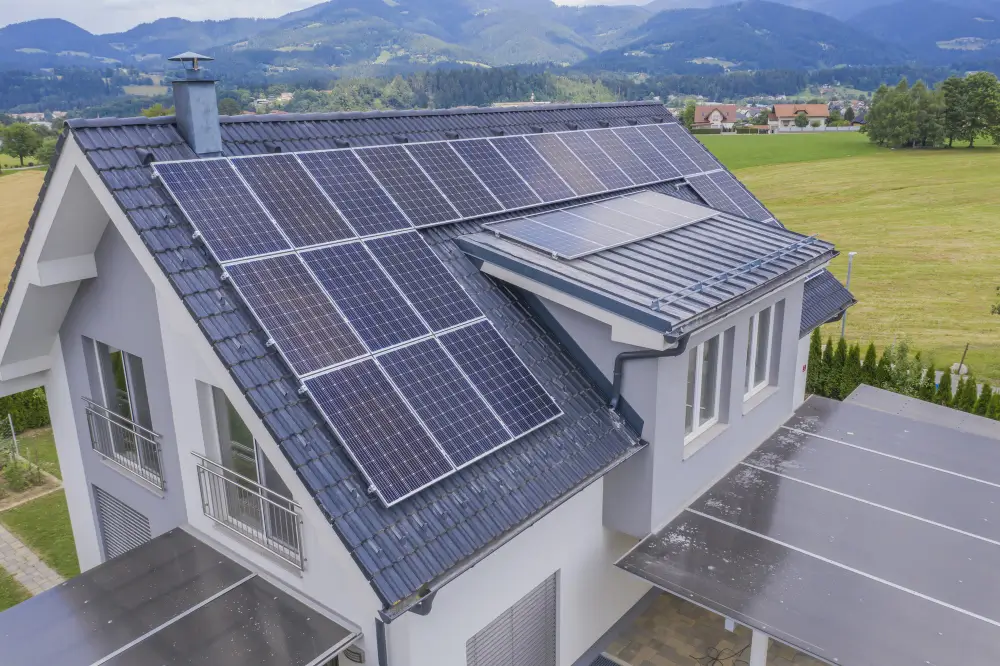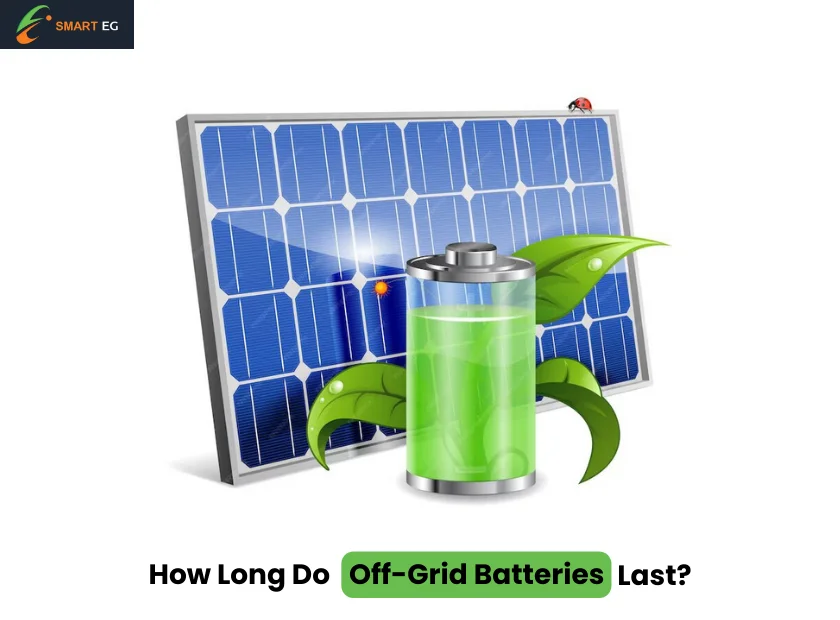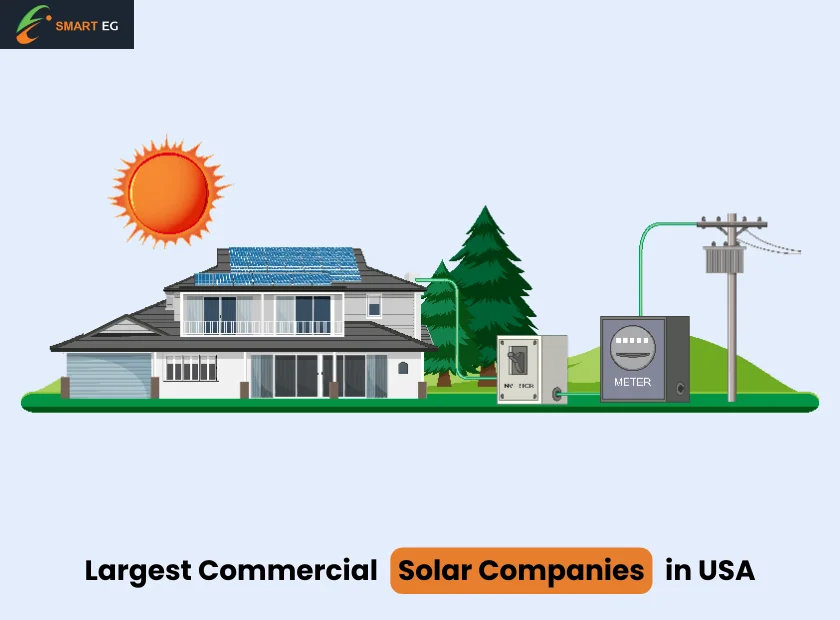Solar Panels for Off Grid Living
Solar Panels for Off Grid Living: The appeal of off-grid living has captivated many in this age of increasing environmental awareness and the desire for greater independence. At its core, “off-grid” refers to a lifestyle that forgoes utility company support in favor of renewable power generation. Solar panels play a crucial part in this paradigm-shifting way of life. These seemingly innocuous solar cell panels have come to represent the ideal of green energy production.
How Solar Panels Work?
The sophistication of a device that can convert solar energy into usable electricity is made clear when one examines its inner workings. Photovoltaic cells, which play the role of energy conversion engines, are fundamental to this revolutionary process. Discover how photons and electrons dance to create the electricity that powers off-grid homes.
Photovoltaic cells, often known as solar cells, are the fundamental components of solar panels. Semiconductor materials, most often silicon, are used to construct these cells. Silicon’s special quality is that it can convert sunlight into an electric current. This phenomenon underlies the process of converting solar energy.
Here is the step-by-step breakdown of how solar panels work:
- Photon Absorption: The first step in the transformation of solar energy into usable form is the absorption of photons, the particles of light, by the photovoltaic cells. When a photon enters the cell and collides with a silicon atom, energy is transferred to the atom. When electrons absorb enough energy, they are freed from their bonded state.
- Generation of Electric Current: The dislodging of electrons causes an electric imbalance, which in turn forms an electric field across the cell, culminating in the generation of electric current. The released electrons are pushed by the field towards the cell’s surface, where they can generate a current. What we call electricity is actually just the passage of electrons.
- Direct Current (DC) Generation: The power produced is of the direct current (DC) variety, with its characteristic one-way flow of electrons. Many electronic gadgets can function properly on this voltage. However, AC is the standard in residential and commercial settings.
- Inverter Conversion: An inverter is used to convert the voltage so that it may be used by common household equipment. The work of the inverter is to transform the direct current (DC) electricity produced by the solar panels into the more widely used alternating current (AC). The electricity that runs our homes and businesses is alternating current (AC).
Through this complex mechanism, solar panels collect sunlight and convert it into useful energy that powers off-grid home systems and appliances. Each solar cell works in tandem with its neighbors to produce enough electricity to support a person’s daily needs.
Comparison of Solar Panel Types
It’s important to research the many solar panel options and their individual qualities before deciding on a system for your off-grid home. Let’s take a closer look at monocrystalline, polycrystalline, and thin-film panels and examine their relative merits and shortcomings.
1. Monocrystalline Panels
Advantages:
- High Efficiency: In terms of efficiency, monocrystalline panels are at the head of the pack. They are able to efficiently convert sunlight into electricity due to their single-crystal structure.
- Durability: The panels are built to last and can withstand a wide range of temperatures and humidity levels. This longevity and dependability guarantees use even in off-grid environments.
- Performance in Low-Light Conditions: When the sun isn’t out, monocrystalline solar panels still perform admirably. They are ideally suited for off-grid areas with variable weather because their energy production is relatively constant even on cloudy days or in low-light conditions.
Disadvantages:
- Higher Cost: There is a price to pay for the cutting-edge technology and superior performance of monocrystalline panels. The initial investment is typically more than with other types of panels. The costs may be higher in the beginning, but the payoff is usually worth it.
2. Polycrystalline Panels
Advantages:
- Cost-Effectiveness: Polycrystalline panels are widely recognized for their low production costs. They offer a low-cost alternative for people who want to harvest solar energy but can’t afford a hefty up-front cost.
- Moderate Efficiency: Polycrystalline panels’ efficiency is about that of conventional solar cells, hence their ability to generate power is about average. They find a happy medium between low price and high efficiency.
Disadvantages:
- Lower Efficiency: Polycrystalline panels’ multi-crystalline nature results in slightly lower efficiency rates. This could necessitate a more substantial setup to provide the same quantity of power.
- Larger Footprint: These types of panels can demand more space on your home since their lower efficiency necessitates installing more panels.
3. Thin-Film Panels
Advantages:
- Lightweight and Flexibility: Thin-film panels are the lightest and most adaptable of the three varieties. Because of its adaptability, it may be installed in unconventional places like around corners or in nooks and crannies.
- Performance in High Temperatures: Thin-film panels are more efficient at high temperatures than their crystalline counterparts. Off-grid places with warm weather may benefit from this.
Disadvantages:
- Lower Efficiency: Thin-film panels, the least efficient of the three varieties, having the lowest efficiency rates. To produce the same amount of energy as crystalline panels, they need a bigger surface area.
- Shorter Lifespan: Thin-film panels often have a shorter lifespan than crystalline panels because of their design and materials. This may reduce their usefulness in off-grid applications over time.
Which Solar Panel is Best for Off-Grid?
Monocrystalline solar panels stand out as the best option for off-grid dwelling among the various solar panel kinds. Their high efficiency and long lifespan make them a perfect choice for off-grid energy production. Here are some of the reasons why monocrystalline panels are so highly recommended:
- High Efficiency: Off-grid systems typically have a small footprint but must generate a large amount of power. The best efficiency rates are achieved with monocrystalline panels, guaranteeing more electricity from a smaller installation. This benefit is invaluable in off-grid configurations, where maximizing energy output is of utmost importance.
- Durability: Solar panels in off-grid areas may be subjected to harsh conditions, such as heavy snowfall or collisions with local fauna. Monocrystalline panels are extremely long-lasting because of their sturdy build and single-crystal structure, even in harsh, off-grid conditions.
- Performance in Low-Light Conditions: If you want to go off the grid, you should be prepared for periods of reduced sunshine, whether from overcast days or the passing of the seasons. Energy can be produced by monocrystalline panels even in low-light environments. This reliable operation is guaranteed regardless of the weather conditions.
In most cases, monocrystalline panels are the best option for off-grid systems, although this also depends on your individual needs.
You can make a decision that helps you achieve your goals of sustainable and self-sufficient off-grid living by taking into account your energy needs, available space, budget, and environmental conditions.
Installing Solar Panels Off-Grid
Planning and forethought are crucial to the success of an off-grid solar panel installation. The efficiency of energy generation relies on several factors, not the least of which is the care taken in deciding where to set up shop. Let’s take a tour of the solar panel off-grid installation process and see what you need to know.
1. Location Assessment
First and foremost, you need to think about how much sunlight the area gets. Solar panels perform best when they receive continuous, direct sunshine. Placement of the panels should avoid shade from obstacles such as trees or buildings to maximize their efficiency.
Maximizing energy capture is critically dependent on orientation and tilt angles. Generally speaking, panels in the Northern Hemisphere should be oriented such that they face true south. The slant angle must also be appropriate for your location’s latitude. The panels can be adjusted according to the seasons so that they receive the most amount of sunshine possible throughout the year.
2. Sizing the System
Consider your average daily energy needs while choosing the optimal size of your solar panel installation. Think about the total wattage of everything you want to power, including lights, appliances, and electronics. The amount of energy producing capacity necessary to meet your needs can be estimated using this method.
After figuring out how much power you’ll need, you may determine how many solar panels to install. The ability to store energy in batteries for use on overcast days or at night should also be considered. The success of an off-grid existence depends on your ability to reliably power your home using high-quality batteries.
3. Battery Storage
A dependable energy storage option is required for off-grid life. When the sun isn’t shining, the extra power from the solar panels can be stored in batteries for later use. When energy production is low, as at night or on cloudy days, this is of paramount importance. The feasibility of off-grid lifestyles declines dramatically without access to sufficient energy storage.
It’s crucial to put money into good batteries. The effectiveness and lifespan of your off-grid system are closely related to the quality of the batteries you use. Common choices include lead-acid and lithium-ion batteries, each having their own set of benefits and drawbacks. Select a battery that works with your existing energy infrastructure and helps you achieve your sustainability targets.
4. Inverter Selection
To convert the DC electricity produced by solar panels into the AC electricity often found in homes and businesses, an inverter is utilized as a connecting device. Inverters designed to handle wide swings in energy supply and demand are essential for off-grid systems. Determine the system size and the items you wish to power before purchasing an inverter.
Off-grid solar panel installation is a strategic enterprise that mixes scientific rigor and pragmatism. The foundations of a successful installation include an accurate site evaluation, adequate system sizing, adequate battery storage, and a well-chosen inverter. If you follow these steps carefully, you’ll be well on your way to a sustainable, self-sufficient lifestyle, not merely solar panel integration.
How Many Solar Panels Do I Need to Run Off-Grid?
Several aspects must be considered before settling on the ideal number of solar panels for an off-grid system. Each variable plays a role in the equation for obtaining energy sufficiency, from consumption patterns to panel efficiency. Here are some major factors influencing how many solar panels have to be installed.
- Energy Consumption: Daily energy use is the basis for the calculation. More solar panels are required to produce the same amount of energy used by a larger number of appliances.
- Panel Efficiency: Solar panel efficiency is a major consideration. Greater energy production from smaller panels is possible with improved panel efficiency. Factors like panel type and technology affect efficiency.
- Location: Since energy production is totally dependent on the amount of available sunshine. Greater energy production in sunnier locales could mean using fewer solar panels.
- Seasonal Variation: Changes in the seasons must be taken into account in order to maintain a constant energy supply throughout the year. More panels may be needed in the winter to make up for the diminished sunlight.
Conclusion
The path to energy independence opens up for homes as they free themselves from reliance on utility companies by adopting solar energy. Solar panels harness clean and renewable energy, lowering carbon footprints and furthering the cause of a greener planet; thus, the environmental impact of off-grid solar living is felt strongly.
Don’t forget to leave your feedback in the below comment section as Smart Energy Gap will love to hear from you. Contact us if you want to discuss anything regarding solar energy system. One of our team expert will entertain your query as soon as possible.

